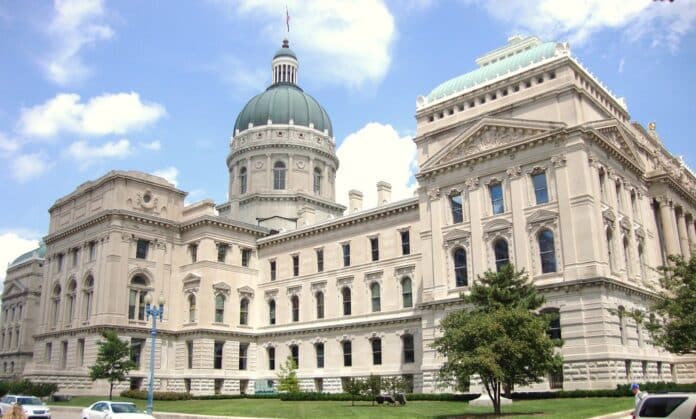INDIANAPOLIS — The state legislature plans to hold a series of meetings with the public to hear feedback on what citizens want from the process of redrawing district maps for itself and for Indiana’s nine congressional districts.
However, voters won’t be able to see the proposed maps, based on census data that has been delayed by COVID-19, before commenting on the process at meetings scheduled for early August.
The closest meeting to Hancock County will be 1-3 p.m. Aug. 11, in the House Chamber at the Indiana Statehouse in Indianapolis. Other meetings will take place Aug. 6-7 at Ivy Tech campuses, including one in Anderson.
Livestreaming of the meetings is planned, but the legislature has not yet announced whether it plans to allow public comment to be made remotely or submitted before the meetings.
“We look forward to hosting these important meetings across the state to hear directly from the public on Indiana’s redistricting process,” said state Rep. Tim Wesco, R-Osceola, chair of the House Committee on Elections and Apportionment. “Hoosiers can be confident that we’ll continue to meet all of our statutory and constitutional requirements.”
Rep. Bob Cherry, R-Greenfield, said he plans to attend four of the eight meetings to listen to public comments. Sen. Mike Crider, R-Greenfield, said he’ll also make it to at least one of the meetings. Thanks to population growth in Hancock County and the surrounding areas, both Cherry and Crider could have their districts reshaped by the process.
“Districts like mine should get smaller, and districts that have lost population should get bigger,” Crider said of the geographic boundaries.
Cherry said he is expecting the legislature will receive the relevant census data in mid-August and will reconvene for a special session in September. He said the legislature could likely finish the process within three days.
The approach indicates that voters will likely not be able to view and comment on the new maps before they are approved, which advocates of a non-partisan redistricting process had been hoping for.
A report released in May by the Indiana Coalition for Independent Redistricting included several recommendations for the process, including that the citizens should have adequate time to consider the maps before a vote. However, legislators also need to pass a final map in time for incumbents and prospective candidates to know the borders of their districts and make decisions about whether to run.
Jay Yeager, an Indianapolis lawyer who has represented voters in recent lawsuits about redistricting, said in June that a public comment period on the redistricting process would mean nothing unless voters were able to see the proposed maps. Even without the census data, he said, legislators were likely already creating proposed maps that could fit possible scenarios and benefit the Republican Party.
“They’re working on these maps right now,” Yeager said.
Yeager said the computer programs legislators use to create legislative districts are so advanced that they can quickly create beneficial maps which might not have unusually-shaped districts that appear to be gerrymandered at first glance. He said previous redistricting processes have given Republicans a clear advantage both in gaining control of the state legislature and in sending members of their party to Congress.
“There ought to be, if our democracy is working, a consequence,” he said.
The Coalition for Independent Redistricting held its own forums on what voters want from the redistricting process earlier this year. Top concerns included ensuring that districts are compact, promoting competitive elections, and keeping communities of interest — areas with similar character and concerns — in the same district.
Local impact
Hancock County Clerk Lisa Lofgreen said the county is currently submitting the forms to the state that it will need in order to receive quick attention on redrawing its own precinct boundaries.
Although the county now allows residents to vote at any of multiple vote centers, rather than limiting them to their own precincts, voters are still registered in a specific precinct, and it can affect who they vote for in state legislative races.
The county may also need to redraw its districts for county commissioners and council members. Lofgreen said the county tries to maintain districts of roughly equal size for the four council districts and three commissioner districts.
Lofgreen said the biggest impact on local districts will likely come from the population growth on the west side of the county and particularly in the McCordsville area.

